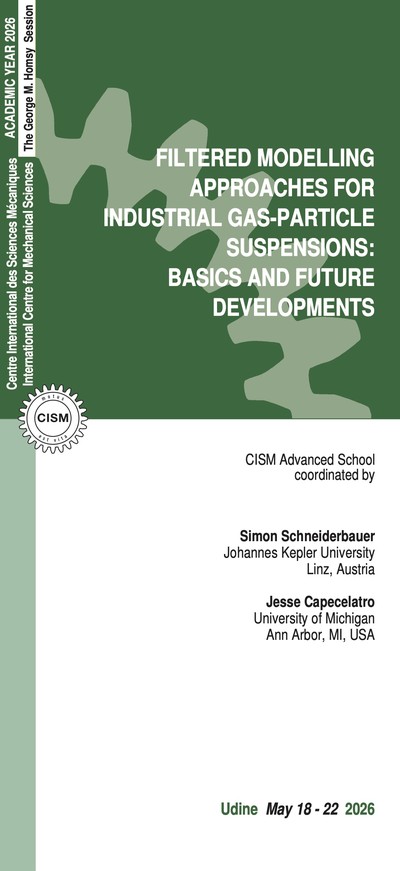Bone is a dynamic living tissue that has the ability to change its mass and structure in response to changes of the biomechanical and biochemical environment in which it operates. In the adult skeleton, bone is continuously being resorbed and reformed, both to maintain mineral homeostasis and to repair microcracks that occur in the bone as a consequence of cyclic loading incurred during daily activities like walking, cycling and running. The fundamental unit process that regulates bone mass and structure occurs within the Bone Multicellular Unit (BMU) which is a highly coordinated system of several cell types actively “turning over” or remodeling the bone matrix. Unbalanced regulation of bone resorption and bone formation during BMU operation lies at the root of many bone diseases, including osteoporosis, so an understanding of the interactions of bone cells and structural components in bone is central to understanding the cause of bone diseases and their effective treatments. The majority of bone diseases, including osteoporosis, Paget’s disease, and cancer related bone diseases, are characterized by an increase in osteoclast formation due to activation of bone resorptive pathways, leading to bone loss and ultimately to bone fractures. Bone is a hierarchical material comprised of macroscale units such as trabecular struts and plates and osteons, which are a microscale composite of hydroxyapatite-like crystals and collagen. The integrity of bone is maintained at each scale by homeostatic feedback processes regulated by bone cells. These processes act across large length and time scales, so interpretation of experimental data can be complex. Furthermore, latest bone biology research has shown that bone interacts with a variety of other tissues including muscles, cartilage and the central nervous system. Developing multiscale computational approaches together with experimental data obtained from latest imaging technologies makes it feasible to integrate and then interrogate these feedback processes. A major aim of this workshop is to present state-of-the-art developments in multiscale modeling and latest experimental data on multiscale mechanobiology of bone remodeling and adaptation including fracture healing applications. The multiscale models will include musculoskeletal models describing bone-muscle interactions during daily activities such as walking or running, micromechanical models for estimation of bone mechanical properties, bone remodeling and adaptation models, cellular models describing the complex bone-cell interactions taking into account biochemical and biomechanical regulatory factors. Also subcellular processes will be covered including arrangement of actin filaments due to mechanical loading and change of receptor configurations. The course will gather experts from the fields of applied mechanics, bone biology, and material science, in order to give, in an unprecedented interdisciplinary fashion, the cutting-edge view on bone mechanobiology. The course is addressed to graduate students, PhD candidates and early career researchers in the field of applied mathematics, biomedical engineering, physics, bone biology, bone tissue engineering and orthopaedics interested in a novel multidisciplinary approach to the mechanobiology of bone remodeling and adaptation with special emphasis on multiscale aspects.
P. Pivonka and S.V. Komarova. Mathematical Modeling in Bone Biology: From Intracellular Signaling to Tissue Mechanics. Bone, 47(2), pp 181-189, 2010. M.J. Silva, (editor). Skeletal Aging and Osteoporosis: Biomechanics and Mechanobiology, Springer, 2012. A. Fritsch, Ch. Hellmich, L. Dormieux. Ductile sliding between mineral crystals followed by rupture of collagen crosslinks: experimentally supported micromechanical explanation of bone strength, Journal of Theoretical Biology, 260, pp 230-252, 2009. S. Scheiner, P. Pivonka and Ch. Hellmich. Coupling systems biology with multiscale mechanics, for computer simulations of bone remodeling, Computer Methods in Applied Mechanics and Engineering, 254, pp 181-196, 2013. A. Gefen (editor). Cellular and Biomolecular Mechanics and Mechanobiology, Springer, 2011. A.G. Robling, A.B. Castillo and C.H.Turner. Biomechanical and Molecular regulation of bone remodelling, Ann. Rev. Biomed. Eng., 8, pp 455-498, 2006. J.W. Fernandez, P.J. Hunter, V. Shim, K. Mithraratne. ‘A subject-specific framework to inform musculoskeletal modelling: Outcomes from the IUPS Physiome Project’ Chapter 2 in: C. Begoña & E. Peña (Eds.), Lecture Notes in Computational Vision and Biomechanics: Patient-specific Computational Modelling, Germany, Springer, pp 39-60, 2012. D.M. Findlay, Subchondral Bone in Osteoarthritis. In: Principles of Osteoarthritis Ed Rothschild, BM, InTech, pp 139-154, ISBN 979-953-307-082-6, 2012. J.L. Ferretti, G.R. Cointry, R.F. Capozza, H.M. Frost. Bone mass, bone strength, muscle-bone interactions, osteopenias and osteoporoses, Mech Ageing Dev. 124, pp 269-79, 2003. S. Takeda, P. Ducy. Regulation of Bone Remodelling by Central and Peripheral Nervous Signals, Principals of Bone Biology, 3rd Edition, Vol 2, ed Bilezikian, Raisz, Martin, pp 1059-68, 2008.
Taiji Adachi (None)
5 lectures on: Mechanobiology of osteocytes; Image-based 3D micro-FE models and their biomedical application; Mechanical regulation of actin cytoskeletal dynamics in silico and in vitro.Justin Fernandez (None)
5 lectures on: Modelling of human muscle and bone interactions during physical activity; musculoskeletal modelling using OpenSim combined with FE modelling using CMISS developed by ABI, CellML bone models.David Findlay (None)
5 lectures on: Interaction of bone tissue with other tissues including muscle, cartilage, vascularisation, and central nervous system (CNS). Clinical aspects of bone together with therapeutic interventions will be discussed.Christian Hellmich (None)
5 lectures on: Bone quality assessment at different scales using experimental and computational approaches; basics of continuum micromechanics with application to bone; multiscale mechanics of tissue engineering scaffolds; merging Computer Tomography with micromechanics as a new clinical tool.Peter Pivonka (None)
6 lectures on: Mathematical description of bone cell interactions including biochemical and mechanobiological regulatory pathways; Micro/meso- to macroscale models using both continuous and discrete model formulations; links to Frost’s mechanostat theory.Tim Skerry (None)
5 lectures on: Bone cell biology including morphological features and function. Frost’s mechanostat theory; animal models of bone mechanobiology; osteocytes and their role as mechano-sensing cells, biology of bone fracture healing.




